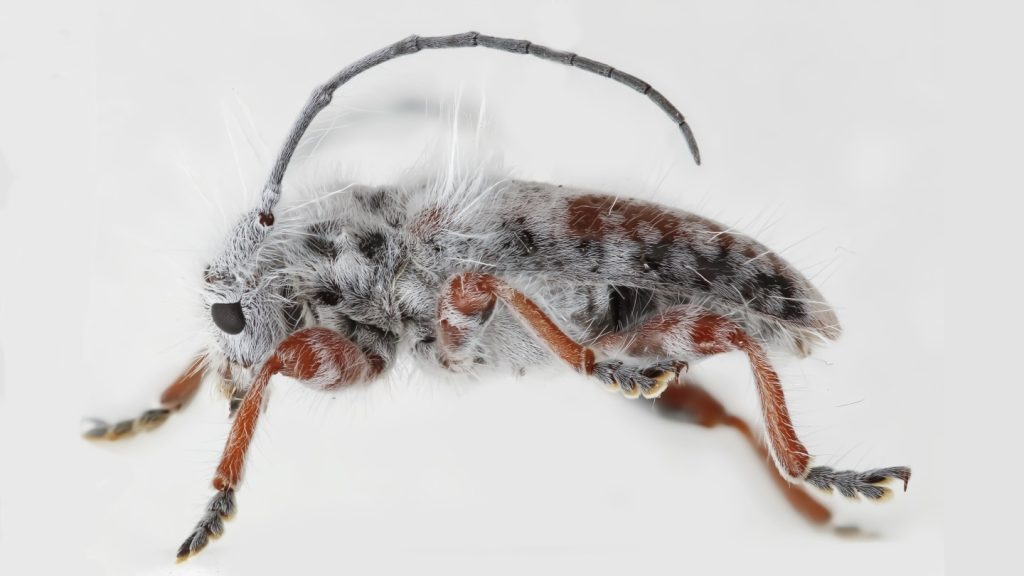Meet Excastra albopilosa, a recently identified longhorn beetle species that has a particularly fluffy white coat.
Found in Australia, this fuzzy-looking insect also has separate eye lobes, short segments on its antennae, and different shapes of its legs. All these things suggest that the beetle might need to be classified as its own genetic family or genus, scientists report on March 19 in the Australian Journal of Taxonomy.
Around 18,000 species of all types are discovered every year — with at least half of them being insects. Menno Schilthuizen, an evolutionary biologist at Taxon Expeditions in Leiden, Netherlands, who was not involved in the study, says, “I’m actually surprised that this species had not been discovered before.” He describes the visually striking beetle, which is nearly a centimeter in length, as being found in a popular area for longhorn beetle enthusiasts.
While staying at an ecolodge near Lamington National Park in Queensland, entomologist James Tweed had stepped out to brush his teeth when he stumbled across “some white thing” hanging on a long and narrow leaf of basket grass. Upon closer inspection, Tweed suspected the thing might be a type of longhorn beetle (Cerambycidae). He snapped a photo and uploaded it to iNaturalist, an app that helps people identify organisms. Other app users couldn’t identify it. Neither could the senior beetle experts at the Australian National Insect Collection in Canberra.
Together, the researchers searched through all the longhorn beetle databases of Australia. Because of the new beetle’s unique physical appearance, “we were pretty confident that this was a distinct genus and species,” says Tweed, of the University of Queensland in Brisbane. Its suggested name comes from the Latin words Excastra, meaning “from a camp,” and albopilosa, meaning “white and hairy.”
Tweed and colleagues are still unsure about the exact purpose of the white hairs. If the fluff makes predators think the beetle has a fungal infection, then that might reduce the insect’s chances of getting eaten. Or perhaps the hairs help the beetle control its body temperature.
Finding species that are new to science, Schilthuizen says, is a “very satisfying feeling.” Of the estimated 5 million insect species globally, researchers have only named about a million. The work is a way to “at least safeguard yet another species, add it to the scientific literature and make sure that somebody else recognizes it when they find it,” he says.



